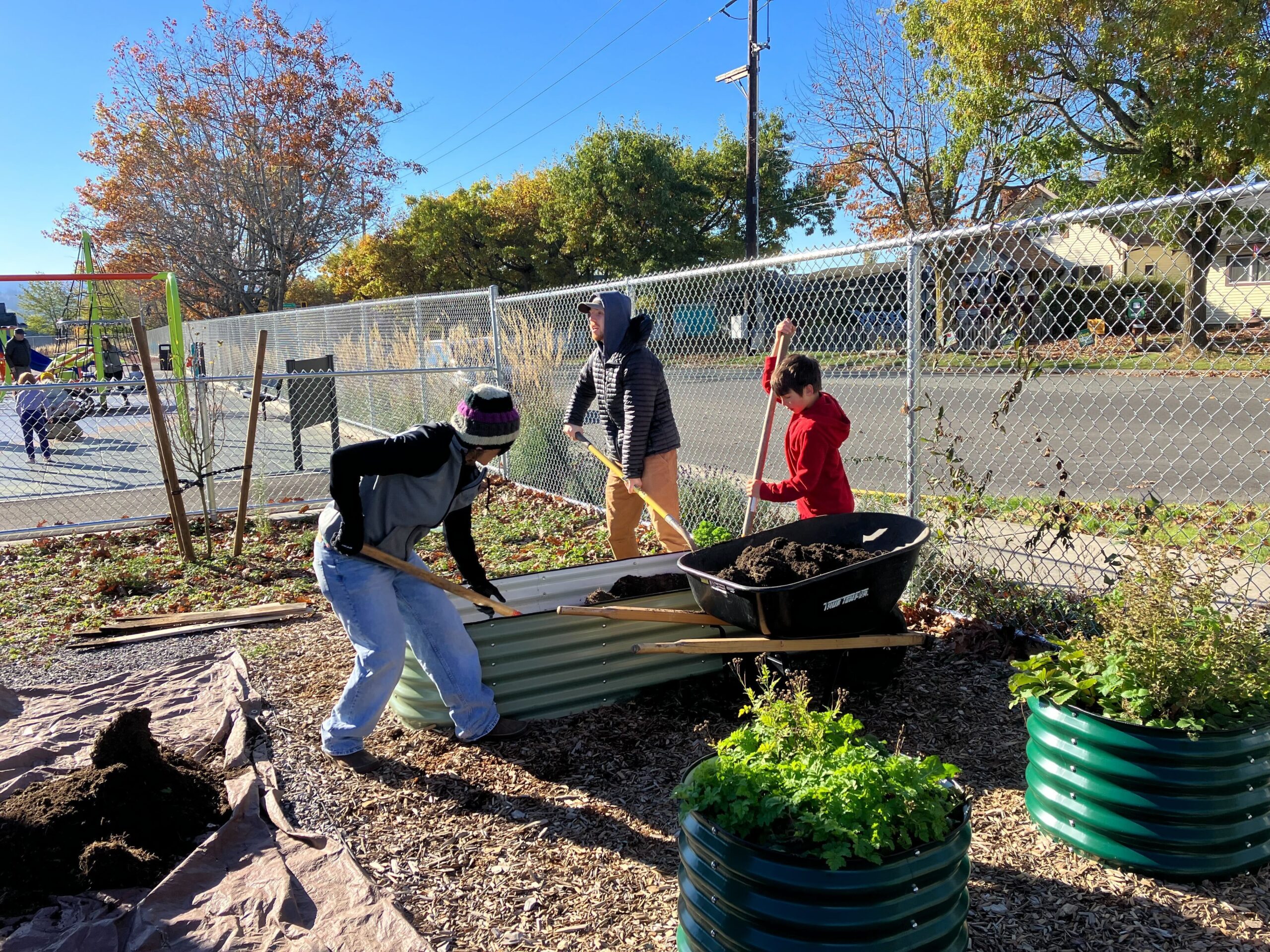
By Robby Sheils, AmeriCorps Food Educator
When I showed up thirty minutes early to my garden work party, I was worried no one would show. It was on the morning of a beautiful, sunny Saturday in Bellingham, Washington, where blue sky is a rarity, especially in October. Orange leaves were still hanging to the trees, and if you avoided the shadows you could get away with wearing a long-sleeve. As a former elementary student myself, I was certain that no child would want to spend their morsel of sunny freedom working within the fences of their school’s garden.
But I was mistaken.
Five minutes before the work party would begin, just after we had set out a smorgasbord of brunch snacks galore, our first volunteer showed up. She was a fifth grader I recognized from garden class, and she demanded she get right to work. As the sun rose, some more bleary-eyed students creaked open the garden’s gate and asked for a pitchfork and a task (stat!). We never ran out of jobs for them. The special thing about gardening is there are endless things to be done; kids and adults contributing in their own particular ways to create a shared space between them. By the end of the day, our small team of students and parents were able to move ten garden beds, construct a new composting system, transplant a raspberry bush, plant a blueberry bush, and eat at least two dozen scones. By noon, we tipped our wheelbarrows over with full stomachs and happy hearts.
As an educator, it’s hard to see how what you say resonates with students—if it resonates at all. Sure, in school you hear a fair share of gardening stories, but it’s difficult to see if lessons ever translate to action. That morning, we saw. You ever want to test if a kid is passionate about something? Make them do it on a sunny Saturday morning in the PNW.
If you’re interested in participating, visit the “Get Involved” section of our website to learn more! If you would like to support young chefs and gardeners, donate here.
